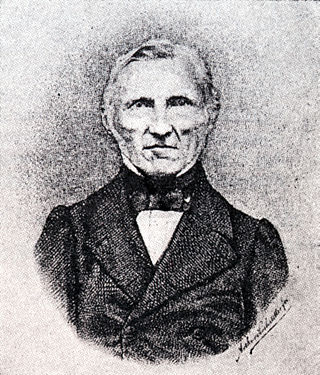
Philipp Christoph Zeller was a German entomologist.

Alexander Henry Haliday was an Irish entomologist. He is primarily known for his work on Hymenoptera, Diptera, and Thysanoptera, but worked on all insect orders and on many aspects of entomology.

Psychodidae, also called drain flies, sink flies, filter flies, sewer flies, or sewer gnats, is a family of true flies. Some genera have short, hairy bodies and wings, giving them a "furry" moth-like appearance, hence one of their common names, moth flies. Members of the sub-family Phlebotominae, which are hematophagous, may be called sand flies in some countries, although this term is also used for other unrelated flies.

The Mymaridae, commonly known as fairyflies or fairy wasps, are a family of chalcidoid wasps found in temperate, subtropical, and tropical regions throughout the world. The family contains around 100 genera with 1,400 species.

Clusiidae or "druid flies" is a family of small, thin, yellow to black acalyptrate flies with a characteristic antenna and with the wing usually partially infuscated. They have a cylindrical body. The head is round, the vertical plate reaches the anterior margin of the frons and the vibrissae on the head are large. The costa is interrupted near subcosta and the latter developed throughout length. Larvae are found in the bark of trees, the flies on trunks. The larvae are notable for their ability to jump. Males of many species in the subfamily Clusiodinae have been observed while engaged in lekking behaviour. There are hundreds of species in 14 genera found in all the Ecoregions, although most species occur in tropical regions. The type genus is Clusia Haliday, 1838.

The Coelopidae or kelp flies are a family of Acalyptratae flies, they are sometimes also called seaweed flies, although both terms are used for a number of seashore Diptera. Fewer than 40 species occur worldwide. The family is found in temperate areas, with species occurring in the southern Afrotropical, Holarctic, and Australasian regions.

Campsicnemus is a genus of flies in family Dolichopodidae. There are more than 290 described species, made up of 34 Palearctic, 22 Nearctic, seven Afrotropic, 170 Australasian and Oceanian, and seven Indomalayan species. Some species endemic to the Hawaiian islands are characterized by their lack of wings. After the introduction of invasive ants and other alien species such as wild boar (Sus scrofa) to the islands, some of these flightless species are believed extinct.

Aphrosylus is a genus of flies in the family Dolichopodidae. All species are intertidal in habitat.

An Essay on the Classification of the Parasitic Hymenoptera of Britain Which Correspond with the Ichneumones Minuti of Linnaeus is a Victorian monograph of entomology published in the Entomological Magazine between 1833 and 1838, by the Irish entomologist Alexander Henry Haliday.
Canace is a genus of beach flies in the family Canacidae. All known species are of Afrotropical or Palaearctic distribution.

Anagrus is a genus of fairyflies, in the family Mymaridae, comprising over 90 species, a number of which are employed as biocontrol agents. They come in a wide array of colors such as, brown, orange, black and pale. For classificatory purposes, the genus is divided into three subgenera Anagrella, Anagrus and Paranagrus. The adults lay eggs on the host, mainly Hemiptera, with a few using Odonata as hosts.

Telenomus is a genus of parasitoid wasps from the subfamily Telenominae. The genus was first described by Alexander Henry Haliday in 1833. Species in this genus parasitise the eggs or immature stages of other insects.

Ilytheinae is a subfamily of shore flies in the family Ephydridae.
Hyadina is a genus of shore flies in the family Ephydridae.
Ismaridae is a family of insects belonging to the order Hymenoptera. About 50 species are known in this small relictual group; all the species for which the biology is known appear to be hyperparasitoids that parasitize Dryinidae.
Amblyaspis is a genus of parasitoid wasps belonging to the family Platygastridae.

Acrodactyla is a genus of insect belonging to the family Ichneumonidae.
Diospilus is a genus of insects belonging to the family Braconidae. They more specifically belong to the subfamily Brachistinae.
Atheroides is a genus of true bugs belonging to the family Aphididae.
Trichomyia is a genus of flies belonging to the family Psychodidae.












